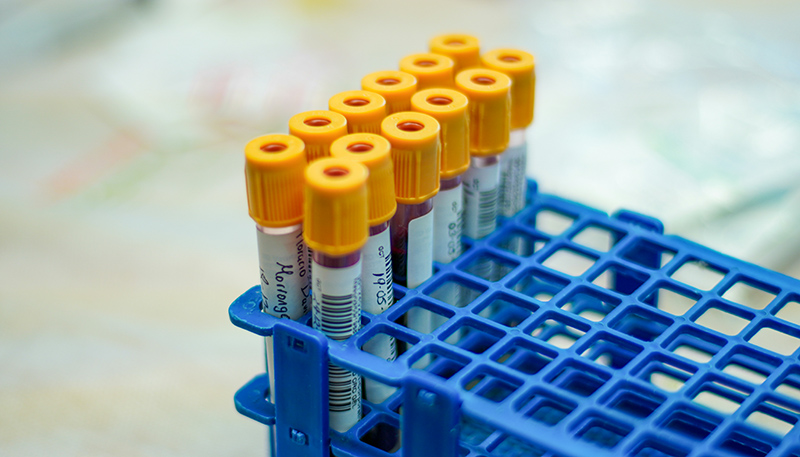Sebelius Speaks About HIV/AIDS Challenges, Funding
Earlier today, Secretary of Health and Human Services Secretary Kathleen Sebelius addressed the 2010 United States Conference on AIDS in Orlando, Florida. In her speech she spoke about the progress made and challenges ahead in fighting HIV/AIDS.
In notable part, according to the prepared remarks, she said:
[I]n recent years, this progress has slowed. While infection rates are still going down, new infections have stalled at around 50,000 a year for the last decade. Among gay men, HIV incidence is actually rising. And perhaps most disturbingly: at a time when then number of American living with HIV/AIDS is at an all time high, concern about the disease is falling rapidly. In 1995, nearly half of all Americans said HIV/AIDS was our most pressing health issue. Today, it’s just one in twenty.
In normal economic times, reversing these trends would be a stiff challenge. During an economic downturn that has forced all of us, from the federal government to the neighborhood clinic, to do more with less, it will take an even bigger effort. To regain momentum in our fight against HIV/AIDS, we will need to recapture that same sense of urgency and spirit of cooperation that brought us out of the darkest days of this disease.
. . . .
We believe that access to treatment for people with HIV and AIDS should not rise and fall with the inevitable cycles of our national economy. It’s not consistent with our values. And it’s not in the best interests of our country.
She also discussed funding priorities for prevention dollars:
[W]e’re going to focus our funding where it can make the biggest difference.
For example, we’ve been very successful at keeping HIV/AIDS incidence low for some populations. If you’re a white, heterosexual woman like me, your chances of being infected by HIV/AIDS are very low – just 1 in 50,000. But if you’re a gay Hispanic man, your chances are 350 times higher. In some U.S. cities, it’s estimated that almost half of all gay black men are HIV-positive.
So part of what this strategy says is that we’re going to intensify our prevention efforts in the communities where infections are concentrated. We’re going to put our resources where the risk is.
To help us do that, we’ve committed $30 million from an unprecedented new Prevention and Public Health Fund created by the Affordable Care Act to support new and existing HIV prevention efforts. These funds will allow us to focus on the communities and geographic areas that have been hardest hit by this disease. And we recently updated our budget request for next year to request $35 million for these essential prevention efforts.
The full remarks of the secretary can be found below the jump.
* * * * *
I want to thank the National Minority AIDS Council for hosting this conference and for all your work to raise awareness and improve access to treatment in some of our hardest hit communities.
We have some terrific HIV/AIDS leaders in this Administration who you’ll hear from in the next two days: the Director of our Office of National AIDS Policy Jeffrey Crowley, our Assistant Secretary for Health Dr. Howard Koh, and our Deputy Assistant Secretary of Health Dr. Ron Valdiserri.
I also want to acknowledge all the AIDS service providers with us who work every day in neighborhoods around the country to overcome stigma, increase screenings, reduce infections, treat illness, and spread hope.
And I want to acknowledge all the other advocates, care providers, and policymakers who have come here this week to talk about how we can move forward together in our fight against HIV/AIDS.
We are gathered here three decades after the first patients with AIDS began showing up in our hospitals. In this age of advanced treatments, when AIDS for many is no longer a death sentence, it’s easy to forget how scary those first years were.
We didn’t know what caused the disease and we weren’t sure how it spread. What we did know was that it meant almost certain death. One advocate compared this time to living in a war zone: you were never sure when the next bomb would drop.
With this uncertainty came fear. And with fear came prejudice. Children with AIDS were turned away from schools. Tenants were locked out of their apartments and forced to live on the streets. Workers were fired from jobs they had held for decades. Sons and daughters were abandoned by their families in hospital beds.
Treatment was hard to come by unless you qualified for Medicaid or could keep a job that provided insurance. And the treatments we did have were ineffective.
When government was slow to act, it was community organizations, springing up on street corners across the country, which met people’s needs. You connected people to treatment, educated them about how to protect themselves, battled discrimination, and got the country’s attention.
You know this story because many of you lived it. And you were also instrumental in writing the next chapter when a coalition that included government, community-based groups, employers, health professionals, and people with AIDS came together with a sense of urgency to develop better approaches for treating and reducing the spread of this disease.
Thanks to those efforts, we have come a long way in the last few decades. The number of new HIV infections among people who inject drugs has dropped by 80 percent. Transmissions during pregnancies are down more than 85 percent. Total annual infections went from more than 130,000 a year in the mid-80s to around 56,000 a year in the 90s. At the same time, the length and quality of life for people living with HIV has risen dramatically thanks to better treatments and better access to care.
Yet, in recent years, this progress has slowed. While infection rates are still going down, new infections have stalled at around 50,000 a year for the last decade. Among gay men, HIV incidence is actually rising. And perhaps most disturbingly: at a time when then number of American living with HIV/AIDS is at an all time high, concern about the disease is falling rapidly. In 1995, nearly half of all Americans said HIV/AIDS was our most pressing health issue. Today, it’s just one in twenty.
In normal economic times, reversing these trends would be a stiff challenge. During an economic downturn that has forced all of us, from the federal government to the neighborhood clinic, to do more with less, it will take an even bigger effort. To regain momentum in our fight against HIV/AIDS, we will need to recapture that same sense of urgency and spirit of cooperation that brought us out of the darkest days of this disease
I know that this is not an easy time for many of your organizations. At a time when many of you are seeing your budgets frozen or cut, Americans are depending on you more than ever – for life-saving treatments, for preventive care, for the housing, nutrition, and child care assistance that can make such a big difference.
My commitment to you today is that we will do everything we can to make sure we maintain these essential services. As you know, earlier this year, we worked hard to find an extra $25 million to help states with dwindling resources respond to demand for the AIDS Drug Assistance Program. But we understand that this is only part of the solution.
That’s why we’ve also requested an extra $30 million for this program in the President’s 2011 budget, and I urge you to help make sure Congress approves this critical funding. Ask them to approve this money this month before they leave town. We don’t have any time to waste.
We’re also talking to states to make sure they understand that even in these difficult times, we should not balance our budgets on the backs of Americans with HIV and AIDS. And we’ve reached out to our partners in the pharmaceutical industry, businesses, foundations, and community-based organizations to make sure they continue to do their part as well.
We believe that access to treatment for people with HIV and AIDS should not rise and fall with the inevitable cycles of our national economy. It’s not consistent with our values. And it’s not in the best interests of our country.
That’s why we fought so hard to pass the Affordable Care Act, a law that enshrines a fundamental principle: that all Americans should have access to affordable health care, regardless of their health status.
Under the new law, we’ll expand Medicaid, the best source of care for many Americans with HIV/AIDS. And for those Americans who don’t qualify for Medicaid and don’t get insurance through their job, we’ll create a new health care marketplace where plans will be forbidden from denying people coverage based on a medical condition.
As a stop-gap until this marketplace is created in 2014, the new law creates Pre-Existing Condition Insurance Plans in every state where uninsured Americans with chronic conditions who had previously been shut out of our health insurance system will be able to get coverage.
But having insurance doesn’t help if you can’t get a doctor. That’s why the Affordable Care Act also makes a major investment in our health care workforce, with a specific focus on getting more doctors and nurses in underserved communities and making sure they have the cultural competency to communicate with their patients.
Added together, these reforms make the Affordable Care Act the most important piece of HIV/AIDS legislation since the Ryan White Act.
But the history of the last thirty years has taught us that government cannot do this alone. We’ve seen over and over again that we make our greatest strides when policy-makers, service providers, and affected communities work together – guided by the most up-to-date science, sharing an understanding of the challenges we face, and committing together to the steps we must take to over come them,.
That’s why last year, under President Obama’s direction, we began working to develop the country’s first-ever comprehensive, national HIV-AIDS strategy. To do that, we held conversations across the country – with doctors and people living with HIV/AIDS, researchers and health workers, activists, community leaders and academics.
And this July, we unveiled a plan with an ambitious vision to make the United States, and I quote: “a place where new HIV infections are rare and when they do occur, every person, regardless of age, gender, race/ethnicity, sexual orientation, gender identity or socio-economic circumstance, will have unfettered access to high quality, life-extending care, free from stigma and discrimination.”
These goals may not be new. But the strategy for achieving them is. We knew we couldn’t keep the same approach and expect different results.
So under this strategy, we’re going to focus our funding where it can make the biggest difference.
For example, we’ve been very successful at keeping HIV/AIDS incidence low for some populations. If you’re a white, heterosexual woman like me, your chances of being infected by HIV/AIDS are very low – just 1 in 50,000. But if you’re a gay Hispanic man, your chances are 350 times higher. In some U.S. cities, it’s estimated that almost half of all gay black men are HIV-positive.
So part of what this strategy says is that we’re going to intensify our prevention efforts in the communities where infections are concentrated. We’re going to put our resources where the risk is.
To help us do that, we’ve committed $30 million from an unprecedented new Prevention and Public Health Fund created by the Affordable Care Act to support new and existing HIV prevention efforts. These funds will allow us to focus on the communities and geographic areas that have been hardest hit by this disease. And we recently updated our budget request for next year to request $35 million for these essential prevention efforts.
But strengthening prevention is just one part of our new strategy. It also calls for new efforts to make sure Americans with HIV and AIDS get the care they need. For example, we’ll work to link testing to treatment, since the earlier care is started, the better the results. And to make sure our prevention and treatment resources reach the people who need them, we will continue to confront the stigma AIDS still carries in too many communities. The easier it is for us to talk about HIV/AIDS, the harder it is for the disease to spread.
For each of these goals, we have set ambitious but reachable targets for the year 2015. And as you’ll hear from Dr. Koh and the Jeff Crowley on Wednesday, we worked closely with community organizations to develop this strategy, and we understand that we’ll need to work closely with you to carry it out.
Over the next two days, I encourage you to learn more about this new strategy and how it can help support your work. The best way to do that is to read it, and I hope you will all do that. You should all have copies of both the Strategy and the Federal Implementation Plan that goes along with it in your program booklets. If you have any questions, you can stop by our Office of HIV/AIDS Policy booth in the exhibit hall.
Three decades after this epidemic began, we face a turning point. Either we can choose to get used to HIV/AIDS, to accept that it’s a permanent feature of our society, to be satisfied with lengthening lives instead of saving them, to go back to the days when insurance companies were free to discriminate against Americans with HIV/AIDS.
Or we can choose to redouble and refocus our efforts, to put a new emphasis on prevention, to expand access to care, to target HIV/AIDS in the communities that bear the brunt of this disease, to move forward with reforms that will give every American access to affordable care.
This Administration has chosen the second path.
And I believe that if we can take the passion and dedication in this room, add support from government at all levels, and direct it towards the programs and interventions we know make the biggest difference in people’s lives, we will regain the momentum we have lost and move forward once again towards the day when the last bomb has fallen and we no longer have to fear this disease.
Thank you.
Support Metro Weekly’s Journalism
These are challenging times for news organizations. And yet it’s crucial we stay active and provide vital resources and information to both our local readers and the world. So won’t you please take a moment and consider supporting Metro Weekly with a membership? For as little as $5 a month, you can help ensure Metro Weekly magazine and MetroWeekly.com remain free, viable resources as we provide the best, most diverse, culturally-resonant LGBTQ coverage in both the D.C. region and around the world. Memberships come with exclusive perks and discounts, your own personal digital delivery of each week’s magazine (and an archive), access to our Member's Lounge when it launches this fall, and exclusive members-only items like Metro Weekly Membership Mugs and Tote Bags! Check out all our membership levels here and please join us today!





















